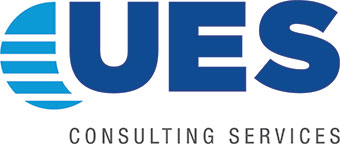CRE Investors! Here are 3 ways to quicken decisions in uncertain markets.
“Over the last few months, news channels have been filled with stories about movements that are directly affecting the U.S. economy and real estate investments.“
-Dan Dokovic Managing Partner, Co-Founder at Bamboo Equity Partners, a leading CRE investment firm.
What are the reasons for these movements?
The first is the news of rising interest rates, trade wars dominating the airways, government shutdown all leading towards business uncertainty. Second is the quick pace of advancing technology which affecting commercial real estate space. Lastly, as seen nationwide popular retailers are quickly closing down and declaring bankruptcy forcing shopping centers to clear out or shut down at rapid rates.
“The real estate industry has become the poster child for uncertainty and anxiety.”
How to overcome this as a CRE investor?
Get ahead of the curve with 3 practical applications below that will help you stay relevant and pivot quickly in response to the shifting industry movements.
1. Fill the space.
“Real estate investment companies should reconsider their existing tenant mix. Long gone are the days of 10 to 15 year leases. With any uncertainty in the business market, corporations are often looking for a short-term lease.“
Therefore, re-evaluate your long-term leases & business model.
“While short-term leases may alter financial forecasting and real estate valuation, immediate increases in net operating income will outweigh the risk of carrying the vacant space.“
A major trend is to start diversifying the tenant mixes for overall appeal of your property. An example is mall owners are lending their empty space to startup restaurants, co-working companies, or incubators in hopes it will lure more tenants into the property. These tenants don’t pay rent or nearly as much but will increase foot traffic, visibility, and popularity.
Practical First Step: Initiate partnerships with co-working companies, entice new-age tenants by enhancing your digital strategy, and enlarge your leasing capabilities.
2. Build Relationships
In uncertain times it’s important to focus on growth capital and support from partners and peers. For future stability and success it’s vital to build relationships.
“While the industry is in the growth cycle, capital is bountiful. However, as soon as the cycle turns, having capital is the difference between muddling through and controlling destiny.”
“Understanding and growing capital relationships comes in two forms: existing capital sources and new prospects with unrelated capital allocations.”
For existing capital relationships, constant communication is crucial. Banking relationships vary with the economic cycles change. Investment executives need to keep in step with bank’s directions and anticipate said direction would have on business.
Here are some examples…
- “Banks that focus on real estate lending might concentrate on commercial and industrial loans after a merger which, in turn, might diminish the negotiating power of borrowers in a downturn.
- In addition to current capital providers, real estate managers should focus on acquiring alternative sources of equity and debt.
- A multitenant office owner might want to seek a partnership with a single, long-term tenant equity provider in order to mitigate the risk of short-term leases.
- Alternatively, office asset managers might want to connect with industrial capital sources in order to diversify high-cost risks, like retenanting office buildings.”
3. Diversify your assets.
According to past data, these changes in real estate are not hitting all markets. An example is the highs and lows of employment rates may affect the office market but the industrial market could flourish due to the increased shift towards e-commerce.
During the last cycle, manufactured housing and self-storage sectors performed better than other property types.
“According to Trepp Bank Research’s April 2017 report of historical CRE losses, self-storage had the lowest average loan loss severity of all property sectors at 1.52%, while manufacturing housing loss was at 3.53%. Comparatively, in a different sector, retail had an average loss rate of 6.17% and office at 6.13%. While taking into consideration these examples, property sectors (per research completed by Nareit in December 2018) and manufactured homes provided total returns of 24.93% and 11.43% for the years 2017 and 2018, respectively.“
Gaining property sector diversity can lessen risk across your business. But be cautious in your decisions. “While diversification can provide a footing to weather storms, businesses must be prudent as diversification efforts have their own risks. “
What crucial questions do you ask before making final decisions in this ages industry?
What oversights can be pulled from current practices?
Who are the allies in this diversification process?
“To stay relevant, future real estate leaders need to continue on the path of innovation. While transformation is tough, the only way to continue growing is to advance with the times. As it was in previous cycles, great things come to those who are able to pivot during the hardest times.“
- Kansas City Development Landscape Still Booming!
- ULI Sets Forecast for a Potential 2021-2022 Rebound
- Long-Term Housing Shortages and Affordability Issues Keep Capital Flooding into Multifamily
- Medical Office Buildings a Safe Haven Asset During Uncertain Times; Physician Practices Still Struggle
- COVID-19 Response: UES Continues Business Operations as Normal



